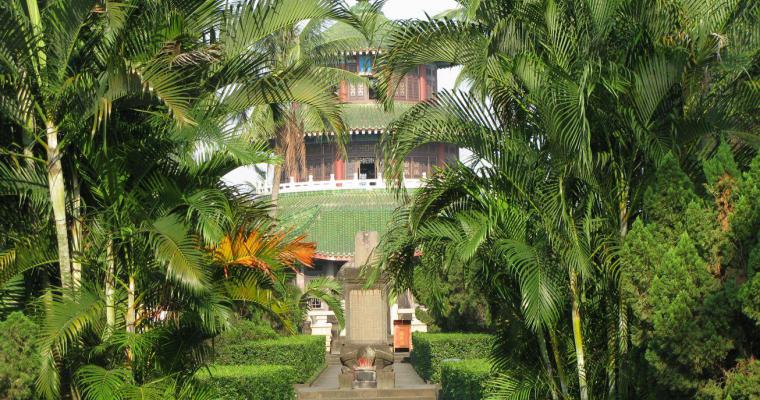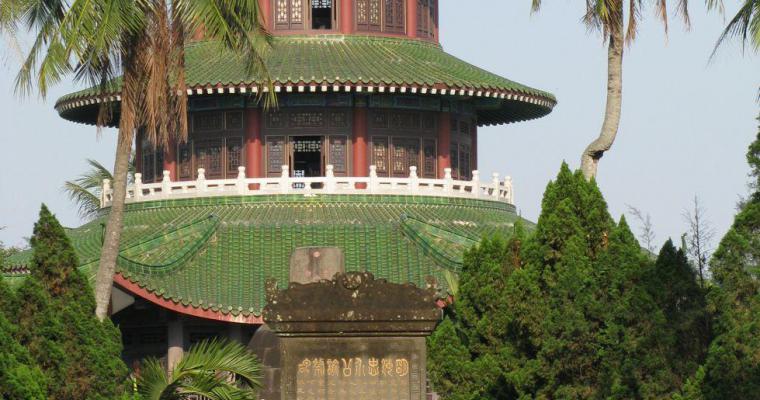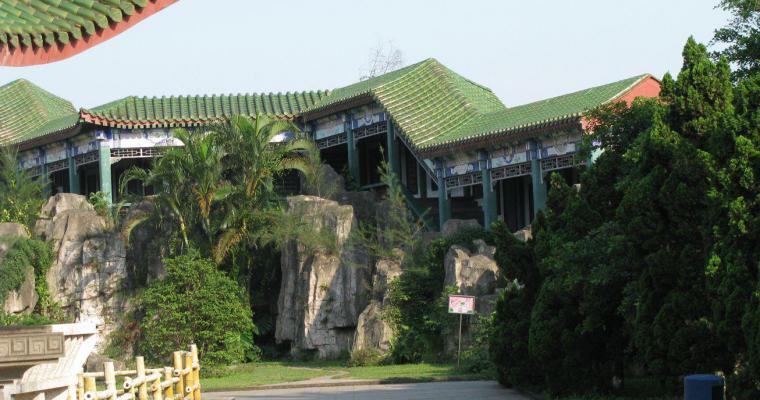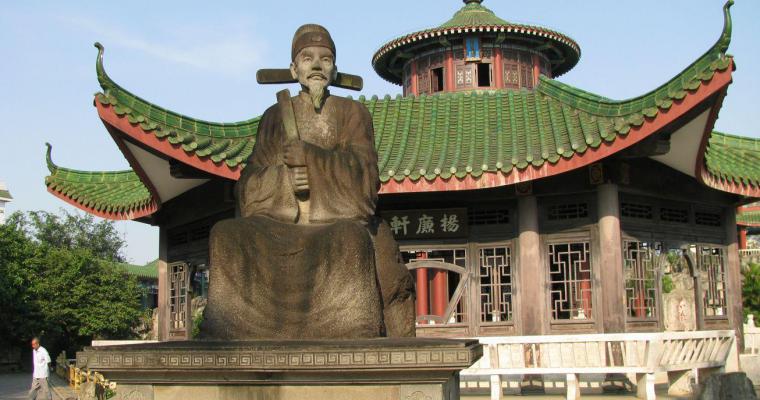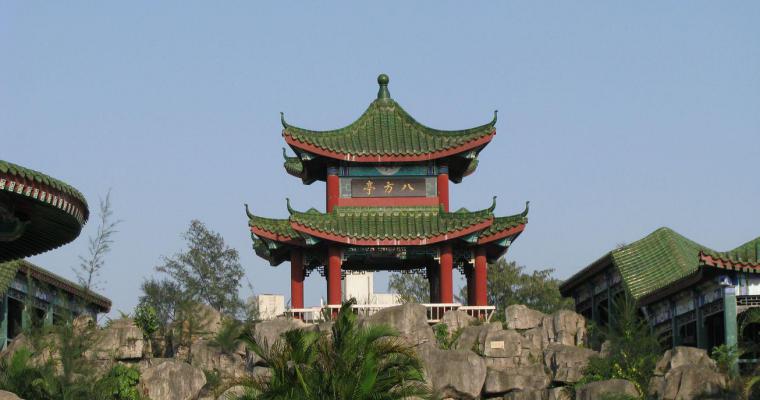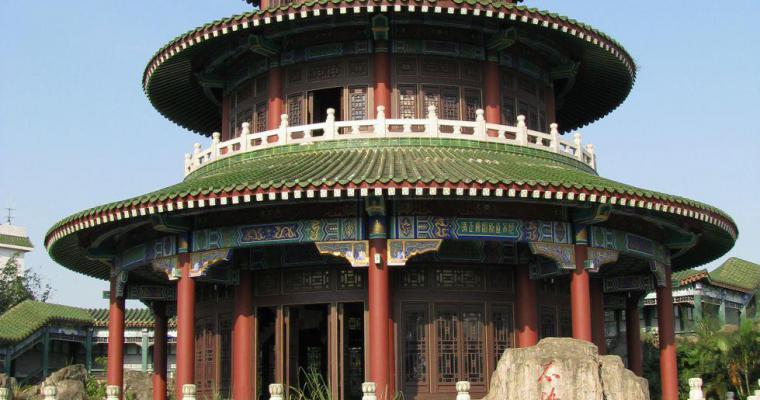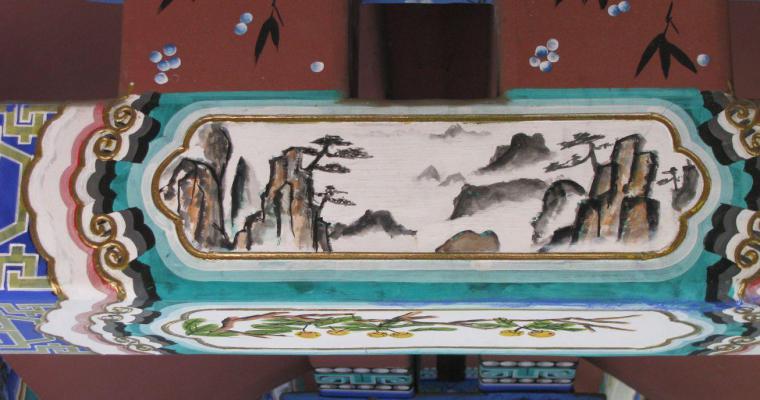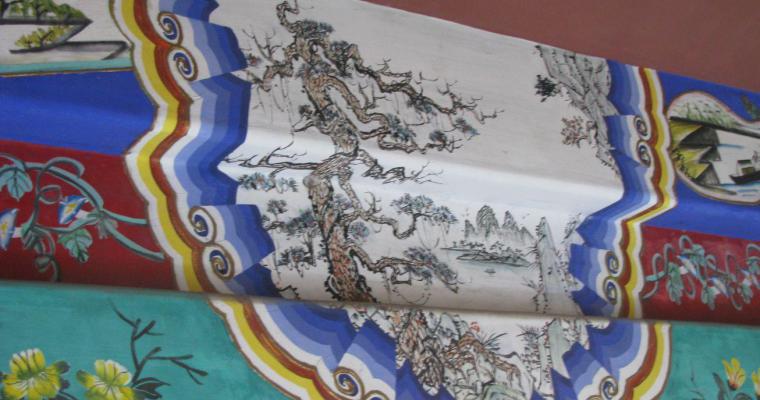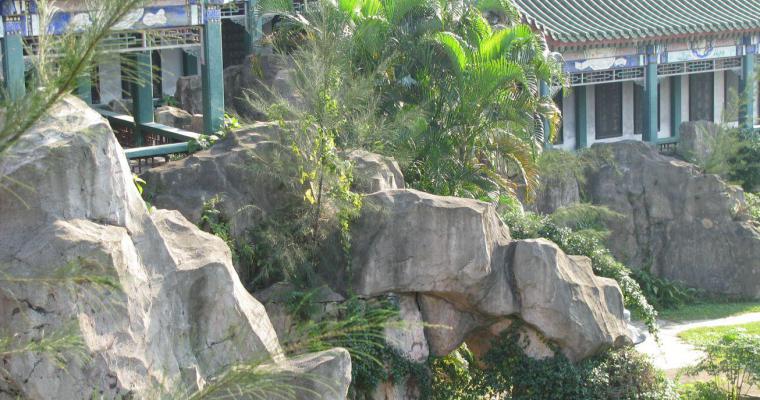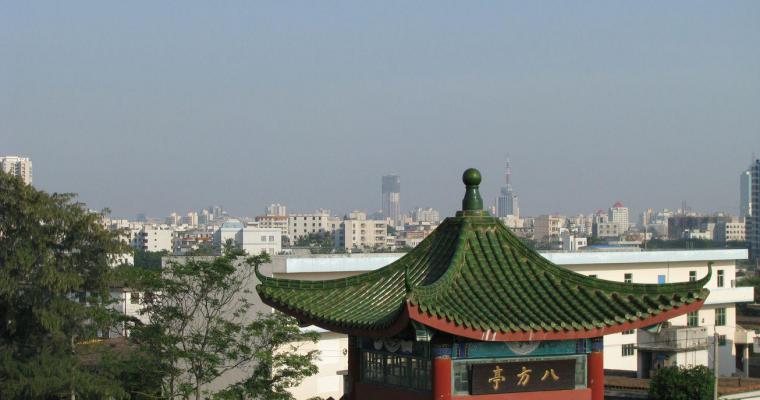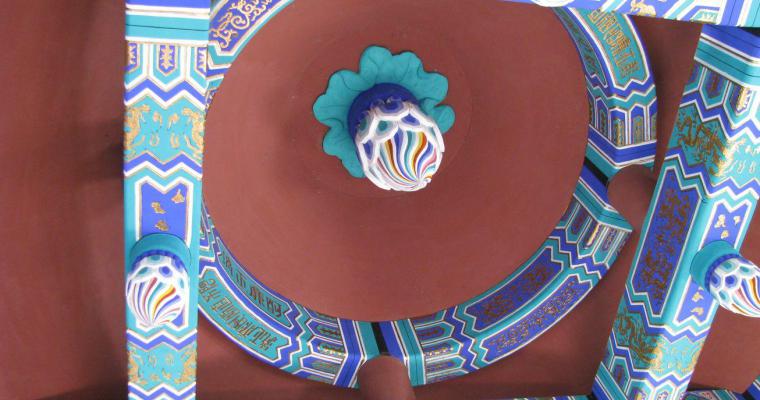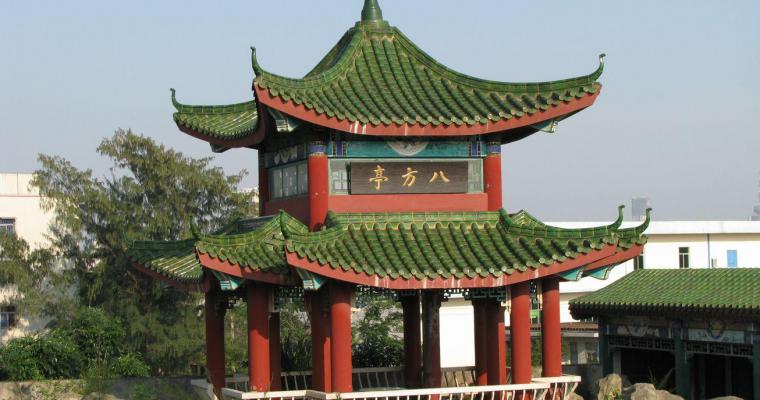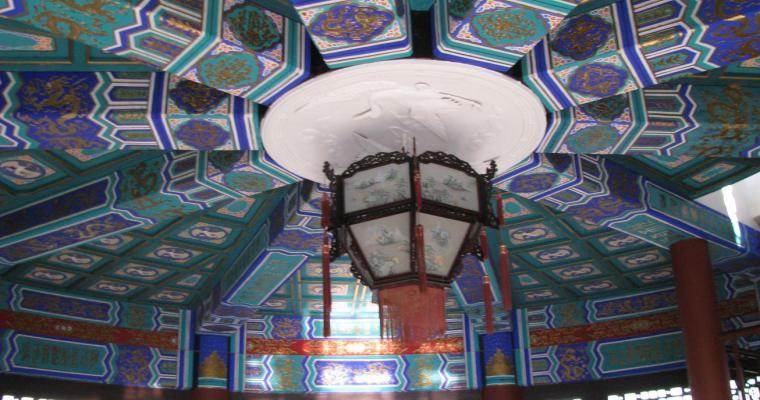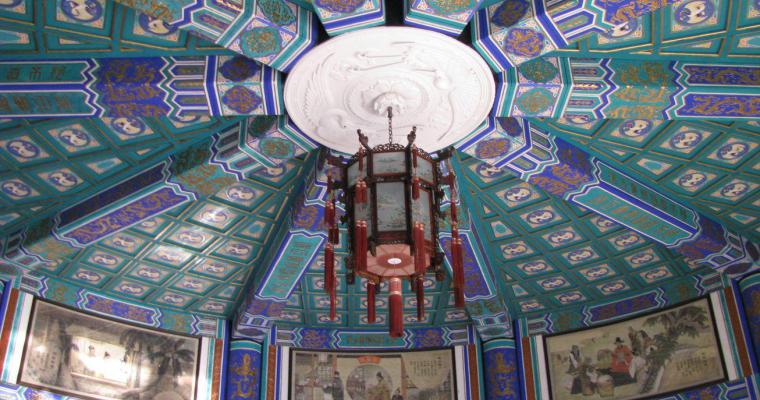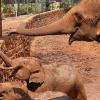The Tomb of Hai Rui, located in the western outskirts of Haikou City, Hainan, is a significant cultural landmark that honors the legacy of Hai Rui, a Ming Dynasty official renowned for his integrity and uprightness. Built in 1589, this historical site has withstood the test of time, with many of its original constructions still intact. Visitors to the tomb can immerse themselves in the tranquil beauty of the garden, where exuberant pines and coconut palms stand alongside sweet lotus flowers, creating a serene atmosphere that reflects the purity and simplicity of Hai Rui's life. The path to the tomb is lined with stone statues of lions, goats, and horses, leading to a stone tortoise carrying a stele on its back, symbolizing longevity and steadfastness, much like Hai Rui's unyielding moral character. The tomb area itself, situated on the third level of the site, invites contemplation and respect, with an incense burner adding to the solemnity of the space. Hai Rui's story is one of remarkable honesty and service; despite holding a significant position, he led a modest life, leaving behind only a few personal belongings and a legacy of moral fortitude. His tomb not only serves as a physical reminder of his contributions but also as an inspiration, encouraging visitors to reflect on the virtues of honesty and integrity in public service. The Tomb of Hai Rui is not just a historical site; it is a testament to the enduring respect and admiration for a man who lived over four centuries ago, yet whose spirit of incorruptibility and righteousness continues to resonate with people today.
Activities near Tomb of Hai Rui
Qiu Jun was a famous scholar, official, and writer from Haikou, Hainan. He was born in 1420 and died in
Wanlvyuan Park, also known as Evergreen Park, is a verdant oasis in the bustling city of Haikou, Hainan. Nestled along
Movie Town is a collaboration between China’s premium leisure and lifestyle conglomerate Mission Hills Group, acclaimed film director Feng Xiaogang
The Leiqiong Global Geopark, located near Haikou in Hainan, China, is a spectacular natural wonder that showcases the rich volcanic
The Meiling Twin Towers in Chengmai, Hainan, are a testament to the region's cultural and architectural advancement. These towers, inspired
The Hainan Tropical Wildlife Park and Botanical Garden is a lush oasis located in Haikou, Hainan, offering visitors a unique
Hainan Beautiful Romantic Bay(BRB, Meilangwan) Golf Course is located in the county of longevity Chengmai, is very accessible. It’s only
Chengmai County, nestled in the tropical island of Hainan, is a place where nature's beauty is on full display. Among
Mangrove Bay Park in Chengmai County, Hainan, is a unique ecological treasure, blending the beauty of wetlands with the charm
Hongkanling located in Qiaotou village of Chengmai, Occupying 500-mu. The garden is mainly for for producing ceramic, Characteristic ceramic architecture
Jinjiang Central Park is a serene oasis nestled in the heart of Jinjiang town, Chengmai County, offering a peaceful retreat
Jinshan Temple, a serene sanctuary nestled in the heart of Chengmai County, Hainan, is a place where history and spirituality
Fushan Coffee Culture Town, nestled in the heart of Chengmai County, Hainan, is a haven for coffee enthusiasts and culture

